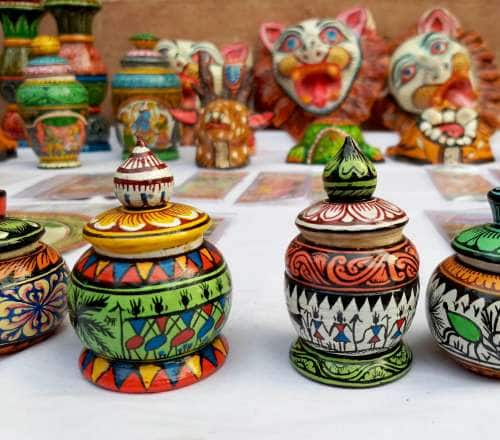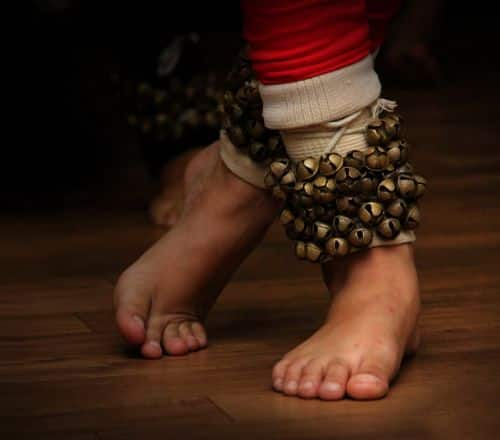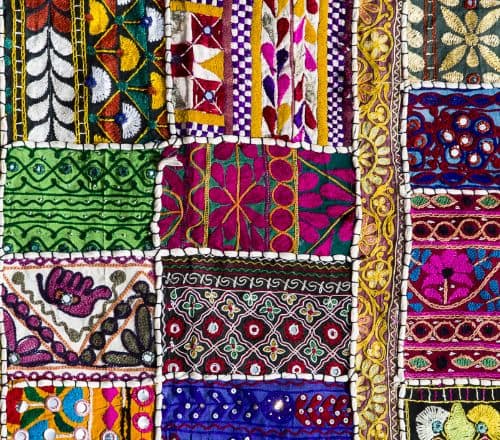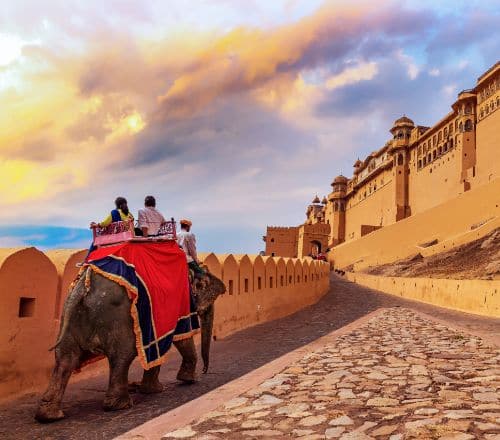Stay logged in to proceed with bookings, orders and offers.
On changing the terminal, you will loose items in your cart. Are you sure you want to change your terminal?
Embark on an artistic journey to Raghurajpur, where traditions come alive in vibrant colours and skilled hands.
In Odisha's rural heartland lies a visual gallery rich in art, craft, and cultural heritage. When I first heard about Raghurajpur in Odisha, I was intrigued by the tales of a village brimming with artists. I had to visit Odisha and witness this renowned living gallery. The village is only about an hour's drive from Bhubaneswar. I went there on my way back from Puri, which was only a 20 minute ride. As I entered the village, a signboard greeted me with the words "Heritage Village Raghurajpur". Neat rows of houses adorned with wall paintings exuded pride in preserving its legacy.
I began by walking through the lanes of Raghurajpur, where every house was adorned with wall art. The walls seemed to come alive with mythological tales and folklore. I learned that this art form in Raghurajpur is known as Pattachitra, which refers to a form of cloth-based scroll painting. I discovered that art and worship share an inseparable bond here. The vibrant art form of Pattachitra traces back to the 12th century. The term "Pattachitra" derives its meaning from the Sanskrit words "Patt" and "Chitra," signifying canvas and painting. These paintings depict Hindu mythological tales and folklore scenes.
What adds a layer of fascination to Pattachitra is its tradition of being passed down from one generation to another. These paintings hold cultural and sentimental value. They have a connection between present-day artisans and their ancestors who crafted these masterpieces. The village is unique because each of its 140 families produces handicrafts. It is the only town in India where every household is dedicated to this artistic pursuit.
With their skilled hands, a chitrakar or pattachitrakar can infuse life into what was once a lifeless surface. This artistic tradition has been deeply ingrained in the village for generations. The town is named after 'Raghuraj', a term that symbolises King Raghu, and is synonymous with Lord Rama in Hindu mythology. According to a well-known legend, it is said that Lord Rama spent a brief period at this location during his 14-year exile. Recognising the cultural significance of Raghurajpur, the Indian National Trust for Art and Cultural Heritage (INTACH) gave it the prestigious title of 'heritage village' in the year 2000. Pattachitra paintings finds its canvas on handmade cloth crafted from old cotton saris or other discarded cotton fabrics used by the women from the village. These layers of cloth are carefully bonded together using a mixture of ground tamarind seeds and glue. Once dried, the surface undergoes a meticulous process of rubbing with a special white stone, creating a smooth and flawless foundation for skilled artisans to bring their creations to life. My time interacting with the artisans here was an enriching experience. They shared their knowledge, techniques, and stories behind their craft. I left with a feeling of awe and gratitude to the artists for their commitment to preserving traditional art forms, which was evident in their unwavering dedication.
As the sun set, a melodic rhythm caught my attention. Curious, I approached the gathering and was delighted to discover a group of young dancers. The friendly locals explained that these young performers were practising the art of Gotipua. Gotipua is a majestic folk dance from Odisha, performed by young boys who dress as females to honour Lord Jagannath and Lord Krishna. Boys start training at a young age, continuing until their androgynous appearance fades. To transform into graceful dancers, the boys grow long hair and style it with flowers. They apply white and red powder makeup, accentuate their eyes with black eyeliner, and wear a Bindi on the forehead. The costume consists of a colourful blouse called "Kanchula" and an embroidered silk cloth tied around the waist. Jewellery made with beads, including necklaces, bracelets, and ear ornaments, are worn. Ankle bells and red liquid on the palms and soles enhance the performance. Gotipua has its roots in ancient Odisha temples, where female dancers called "Devadasi" or "Mahari" dedicated themselves to Lord Jagannath. The decline of the Mahari dancers led to the emergence of Gotipua in the 16th century. The dance style differs from the Mahari tradition and has influenced present-day Odissi dance. It serves as a precursor to Odissi, with iconic postures like "Tribhangi" and "Chouka" symbolising Lord Jagannath. Gotipua continues to enchant spectators, representing the cultural legacy of Odisha. Raghurajpur is more than just a village. It is a living museum that showcases India's artistic legacy. I witnessed the beauty of creativity and the connections between art, history, and identity. In that sense, Raghurajpur is a gem that shines brightly. It calls on travellers and art enthusiasts alike to explore its artistic brilliance.





The Adani One expressly disclaims all liability, direct and indirect, in respect to actions taken or not taken based on any or all the contents of this Blog. The Blog is an opinion of the contributor based on the collation of data from various sources and is provided only for information purpose. Adani One does not canvass, advertise, solicit, invite or induct for any product, merchandise, information, brand or any other materials mentioned in the Blog, nor does it obtain any monetary benefit from the same. Reader is advised to read and apply his/her intellect and discretion in this regard. Any Intellectual Property mentioned in this blog belongs to the rightful owner. We do not intent to claim any interest over the same.